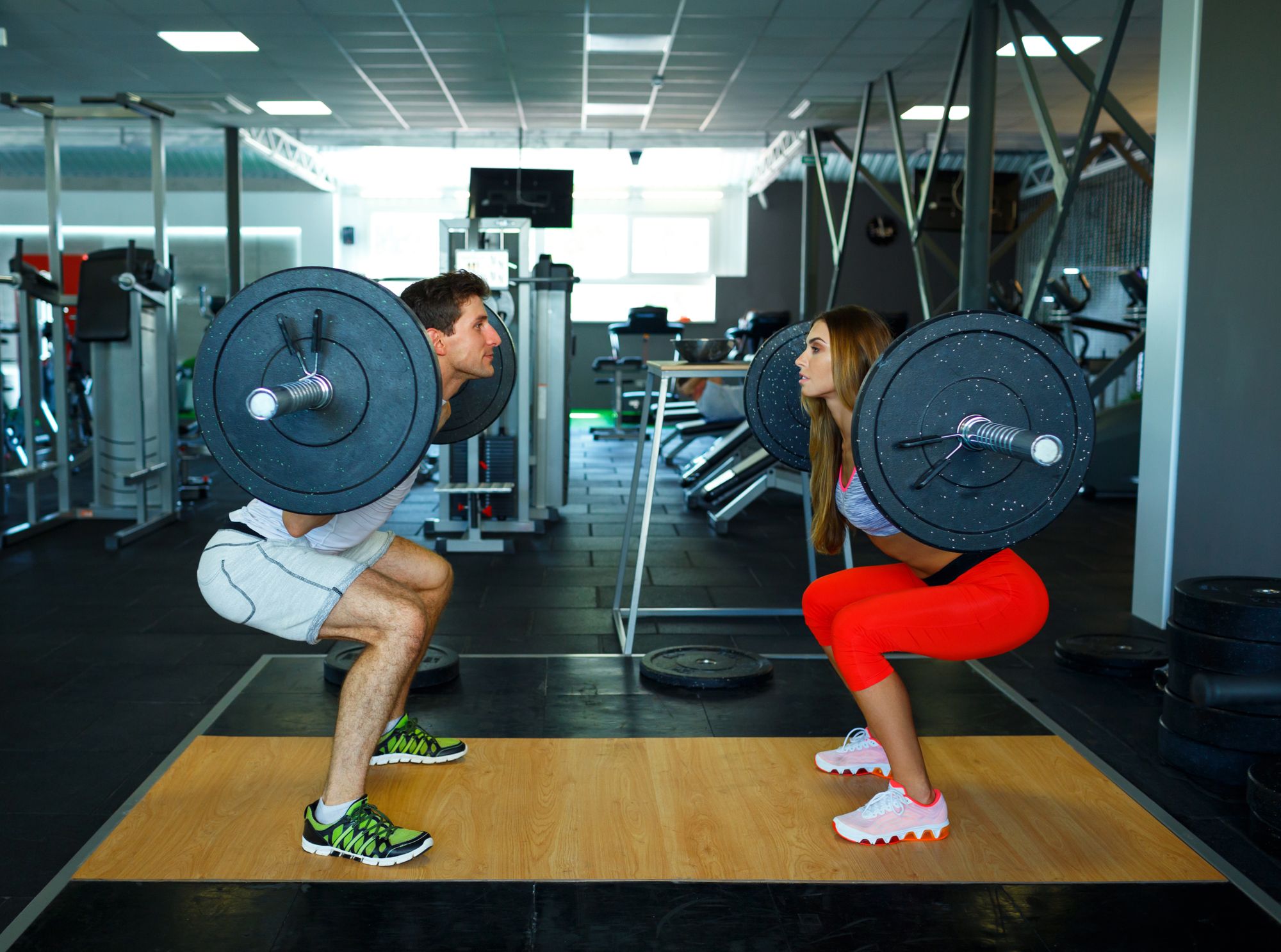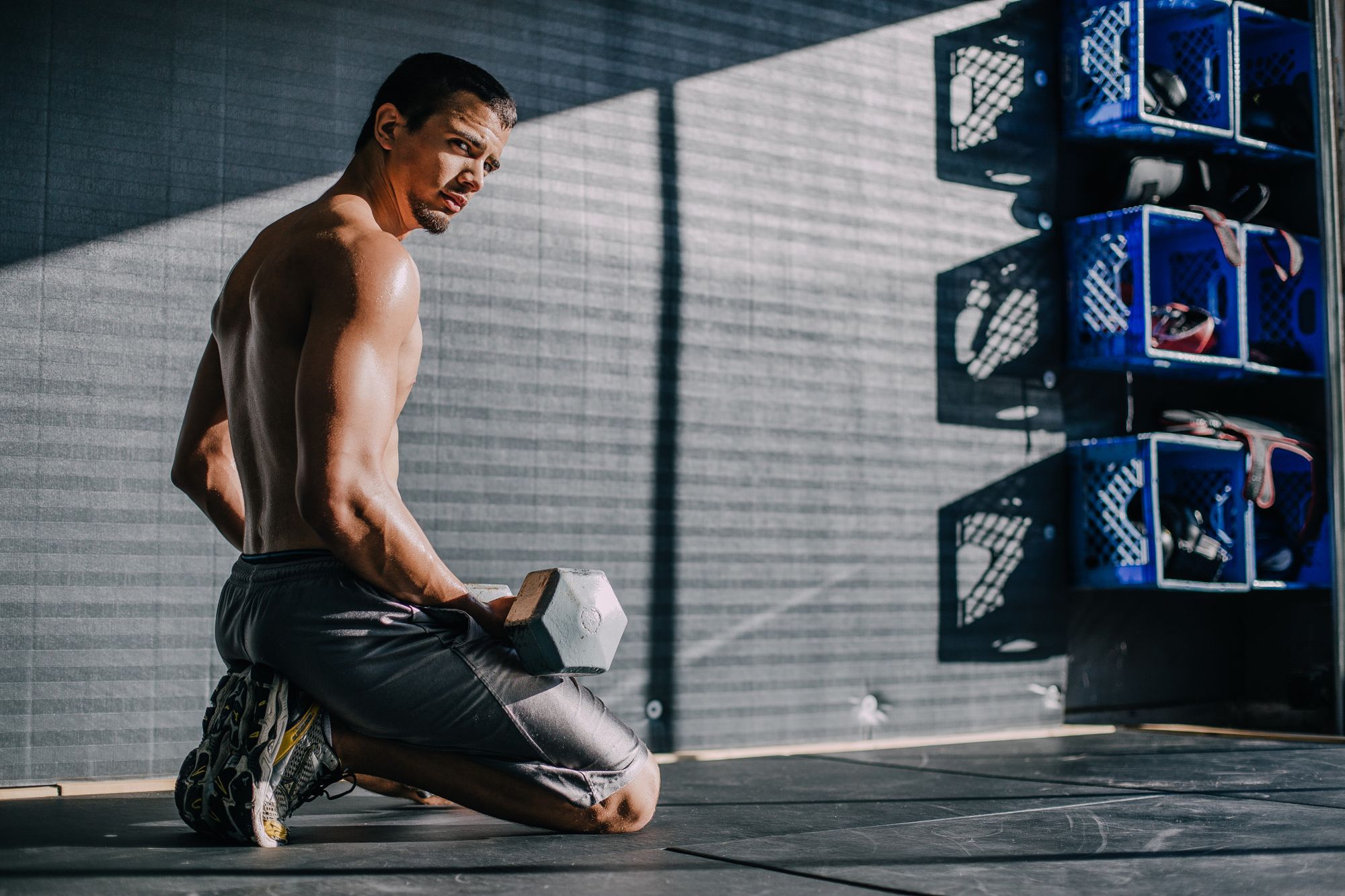How to Brace Your Core and Breathe Properly for Stronger, Safer Lifts
"Brace your core". You've seen this term, like, everywhere—but what does it mean? Is it the same as a crunch? (Finally) find out what it is here.

“Brace your core”. Scan through any exercise “how-to” descriptions, and you’ll typically see this phrase plastered everywhere. But what does it even mean? You have so many questions 🙋
Is it the same as the Valsalva maneuver?
Or do you have to hold a crunch position?
More importantly: where, exactly, on the lift can you breathe?
Before you work yourself up to a frenzy, don’t worry. You’ll find answers in this article. Here, we’ll explore the ins and outs of core-bracing, covering things like:
✨ Simple yet massively effective cues that’ll get you bracing in no time
😮💨 How to regulate breathing while lifting (no passing out on accident!)
Why should you brace your core while lifting?
First things first. Let’s do a brief recap about what your “core” means.
As mentioned in this article, “Are Sit-Ups Pointless? Plus, What to Do Instead for Your Abs Workout, " your core doesn't only refer to your abs—but a whole group of muscles found between the diaphragm and your pelvic floor.
Their overarching role is to help with spine stability and mobility.
Ah, now we're getting somewhere. You're likely getting a clearer picture of why you need to brace your core while lifting. But that's not enough. So let's make it 8K.
#1: Holds your spine in a safe, neutral position
A “neutral” spine position is a natural way your spine curves to maintain body balance with the least musculoskeletal stress.
In other words, keeping a neutral spine while lifting could lower your risk for serious lower back injuries (e.g., disc herniation).
Psst: struggling with chronic pain stemming from a past injury? You can train through it—here’s how:

There is no "standard look" to a neutral spine. Instead, it will vary according to your anatomy—from your muscles to ligaments to bones.
That said, an excellent guideline is that your head, ribcage, and pelvis should be aligned during movement.
Of course, that's easier said than done. So how can you ensure good alignment on all lifts? Even as you're pushing close to your maximum effort? Even on PR attempts?
Answer: by holding a brace.
#2: Allows for stronger lifts
When you brace your core, you're essentially creating a rigid trunk section optimal for force production.
Let's take squats, for instance.
Think about what’ll happen if your core is pliable, like plasticine, vs. if it were solid through-and-through, like a steel bar:
- Plasticine: As you descend, your core will "fold" uncontrollably, pitching your barbell forward, making completing the lift close to impossible.
- Steel bar: Your core remains tight. You can keep the barbell in a straight path over your mid-foot from start to finish, maximizing your balance and strength.
Which is better? It's the steel bar. By stabilizing and "tightening" your entire midsection area, core-bracing minimizes energy leaks and ensures optimal form—allowing you to push heavier loads.
Note: how you perform the squat also depends on your form. Discover how to master that with these articles:



Beyond simply earning you recognition in the gym, this could also significantly boost your training volume, helping you gain muscle mass at an eye-watering rate (as a natty).
How to brace your core
Lower risk of injury and more powerful lifts. What could be better than that? Here's one: knowing how to brace your core so you experience these benefits.
Before that … is core-bracing = Valsalva maneuver?
Contrary to popular belief, core-bracing isn't the same as the Valsalva maneuver.
Yes, they share a common goal—to increase intra-abdominal pressure (i.e., mid-section stability).
But how they achieve that pressure differs.
In the latter, you'll have to forcefully breathe out against a closed windpipe as you perform your lifts. That means you're essentially holding your breath.
In the former, on the other hand, all you’re doing is creating intra-abdominal pressure. You don’t have to hold your breath.
For most lifters, core-bracing is a safer alternative to the Valsalva maneuver.
While VM could offer you more core rigidity and, thus, a stronger lift, researchers are still undecided as to whether it increases a lifter's risk of cardiovascular issues (e.g., strokes and aneurysms).
And when the stakes are so high, nobody will blame you for being too careful!
Now, back to bracing cues
Getting the hang of bracing your core can be challenging. But the trick is to keep practicing and always remember that you shouldn’t feel like you’re doing a crunch.
2️⃣ Draw a deep breath in and think about “bearing down”
3️⃣ As you do so, you should feel your stomach expanding outwards
Have trouble achieving the brace? The following may help:
🥤Think about filling your stomach with lots of air, like you’re a carbonated soda can
😤 If all else fails, wear a lifting belt—and “strain” your core against it as you perform your lifts
Remember how we said you don't have to hold your breath while bracing your core? We mean it. In general, you should be able to breathe relatively normally while holding a brace (i.e., exhale on exertion, inhale before the next rep).
You’ll have to focus extra hard the first few times you do it, but with practice, you’ll eventually find it becomes second nature.
Go ahead, give it a go at your next gym session
Bracing your core and implementing the proper breathing techniques during your gym sessions can be a game-changer for your gains—both muscle- and strength-wise.
But you know what else would also level up your performance and results?
A well-planned workout routine. One that accounts for your fitness goals, ideal training frequency, recovery needs, and equipment availability.
Oh, if only you could get your hands on one. Good news: you can, with GymStreak.
This smart, AI-powered workout planner and tracker gives you all the support you need to succeed on your fitness journey.
See it in action here:
This Way To A Tailored, Well-Planned Workout Routine
You're one click away from leveling up your performance and physique (trust us).
References
Blazek, D., Stastny, P., Maszczyk, A., Krawczyk, M., Matykiewicz, P., & Petr, M. (2019). Systematic review of intra-abdominal and intrathoracic pressures initiated by the Valsalva manoeuvre during high-intensity resistance exercises. Biology of Sport, 36(4), 373–386. https://doi.org/10.5114/biolsport.2019.88759
Harman, E. A., Rosenstein, R. M., Frykman, P. N., & Nigro, G. A. (1989). Effects of a belt on intra-abdominal pressure during weight lifting. Medicine and Science in Sports and Exercise, 21(2), 186–190.
Michaud, F., Pérez Soto, M., Lugrís, U., & Cuadrado, J. (2021). Lower Back Injury Prevention and Sensitization of Hip Hinge with Neutral Spine Using Wearable Sensors during Lifting Exercises. Sensors (Basel, Switzerland), 21(16), 5487. https://doi.org/10.3390/s21165487
Saldaña García, J., Torremocha López, A., & Dawid Milner, M. S. (2020). Influence of repetitions on the Valsalva maneuver. Clinical Neurophysiology Practice, 5, 104–111. https://doi.org/10.1016/j.cnp.2020.04.003
Srivastav, S., Jamil, R. T., & Zeltser, R. (2022). Valsalva Maneuver. In StatPearls. StatPearls Publishing. http://www.ncbi.nlm.nih.gov/books/NBK537248/
Swartz, E. E., & Del Rossi, G. (2009). Cervical Spine Alignment During On-Field Management of Potential Catastrophic Spine Injuries. Sports Health, 1(3), 247–252. https://doi.org/10.1177/1941738109334211


